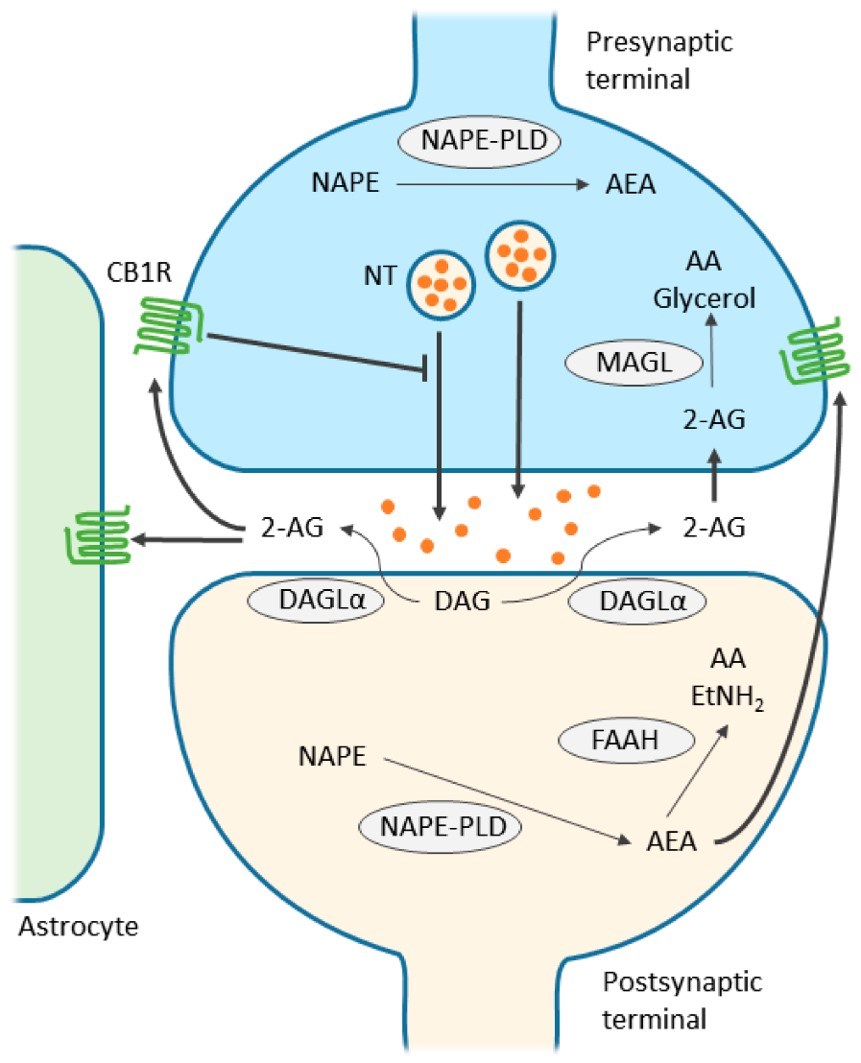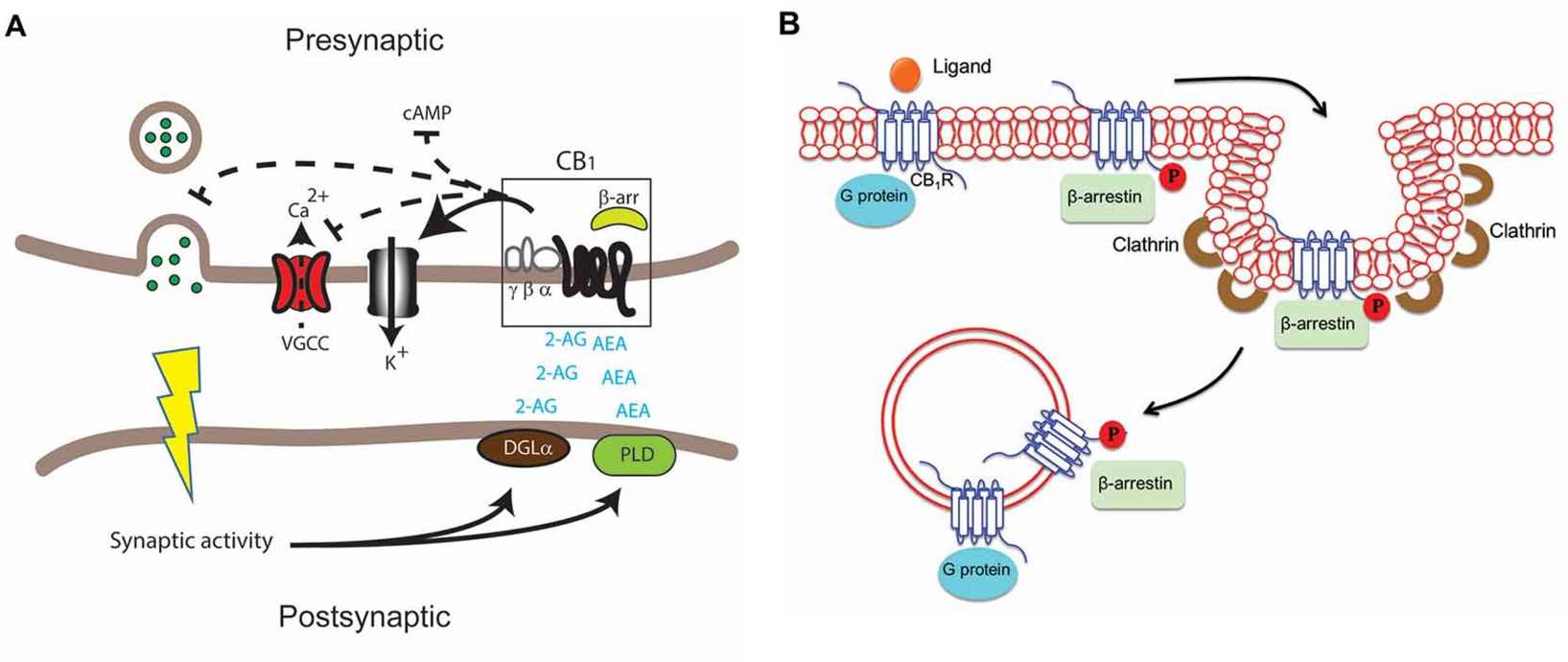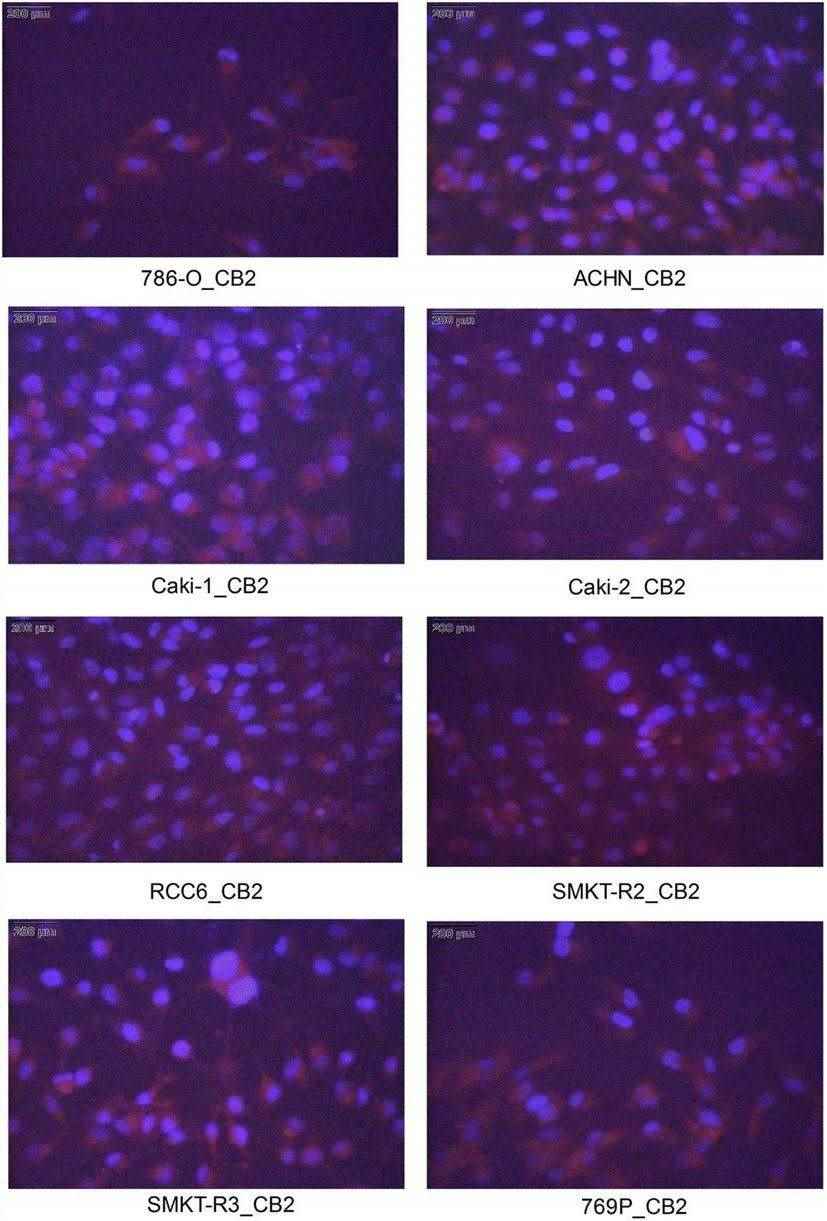Hi-Affi™ In Vitro Cell based Cannabinoid Receptor Functional Assay Service
Cannabinoid Receptor with Future
Cannabinoid receptor (CBR) is a subfamily of GPCRs that mediate the cannabinoid signal. The receptor includes two members, the cannabinoid receptor 1 (CBR1) and 2 (CBR2), in which CBR1, in particular, plays a crucial role in neuropathic and other diseases and has received much attention as a potential therapeutic target. As a result, it's crucial to identify the function that cannabinoid receptors play in the body.
 Fig.1 Simplified scheme representing endocannabinoid retrograde signaling mediated synaptic transmission.1
Fig.1 Simplified scheme representing endocannabinoid retrograde signaling mediated synaptic transmission.1
Our Capabilities
When the cannabinoid receptor reacts with agonists, the G protein-coupled to the cannabinoid receptor is activated, thereby activating downstream signaling. Based on this fact, Creative Biolabs succeeded in developing Hi-Affi™ in vitro cell-based cannabinoid receptor functional assay service and is devoted to offering top-notch services to customers all around the world. We provide the analysis of both signaling pathways and G-protein by measuring the Gi/Go activation, and we are capable of helping global customers to:
- Identify Gi/Go activation
- Design experiments
- Choose the best analytical methodology
- Develop and validate the specific assay(s)
 Fig.2 Signaling pathway of cannabinoid receptors.2
Fig.2 Signaling pathway of cannabinoid receptors.2
What Will You Benefit?
- Diverse Categories of Cells: We have a cell bank system involving multiple types of cell lines to choose from for global customers' projects.
- Trustworthy Experiment System: Our experimental system has years of project experience and is continually being optimized as technology advances.
- Competent Research Professionals: We possess a leading-edge research team to guarantee every customer's project progresses efficiently.
- Full range Services: We provide a full-around customized Hi-Affi™ in vitro cell-based cannabinoid receptor functional assay service from sample processing to data visualization with the most up-to-date technical solutions.
Case Study
Purpose: To identify whether WIN-55's (WIN-55, which is a mixed CB1/CB2 agonist) anti-proliferative activity is mediated by CBR2.
Method: Employing the method of immunocytochemical (ICC) to investigate the CBR expression in the inhibited RCC cells.
Results: The findings suggest that RCC cells produced the CB2 receptor but not the CB1 receptor (data not shown), which revealed low levels of CB1 receptor expression as compared with CB2 receptor expression.
 Fig.3 Immunocytochemical (ICC) staining of cannabinoid receptors.3
Fig.3 Immunocytochemical (ICC) staining of cannabinoid receptors.3
Work with Creative Biolabs

In the field of GPCR functional identification, Creative Biolabs is constantly optimizing and innovating as well as committed to presenting the most ideal results for each customer. Feel free to contact us whenever you have any questions about our Hi-Affi™ in vitro cell-based cannabinoid receptor functional assay service. We're delighted to get to work with you.
Frequently Asked Questions
Q1: What distinguishes CB1 receptors from CB2 receptors?
A1: The brain, adipose tissue, liver, and skeletal muscle all have high levels of CB1 expression. CB2 is linked to nonpsychoactive anti-inflammatory and immunomodulatory actions.
Q2: How to identify the function of cannabinoid receptors?
A2: When an agonist binds to CBR1, it activates Gi/Go, triggering a physiological response that includes PKA activation. We evaluate Gi/Go activation.
References
-
Zou, Shenglong, and Ujendra Kumar. "Cannabinoid receptors and the endocannabinoid system: signaling and function in the central nervous system." International journal of molecular sciences 19.3 (2018): 833.
Distributed under Open Access License CC BY 4.0, without modification. -
Kendall, Debra A., and Guillermo A. Yudowski. "Cannabinoid receptors in the central nervous system: their signaling and roles in disease." Frontiers in cellular neuroscience 10 (2017): 294.
Distributed under Open Access License CC BY 4.0. The original image was modified by extracting and regrouping, and the title was changed to “Signaling pathway of cannabinoid receptors”. -
Khan, Mohammed I., et al. "Involvement of the CB2 cannabinoid receptor in cell growth inhibition and G0/G1 cell cycle arrest via the cannabinoid agonist WIN 55,212–2 in renal cell carcinoma." BMC cancer 18.1 (2018): 1-17.
Distributed under Open Access License CC BY 4.0, without modification.
For Research Use Only.
